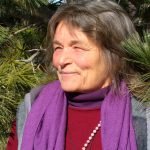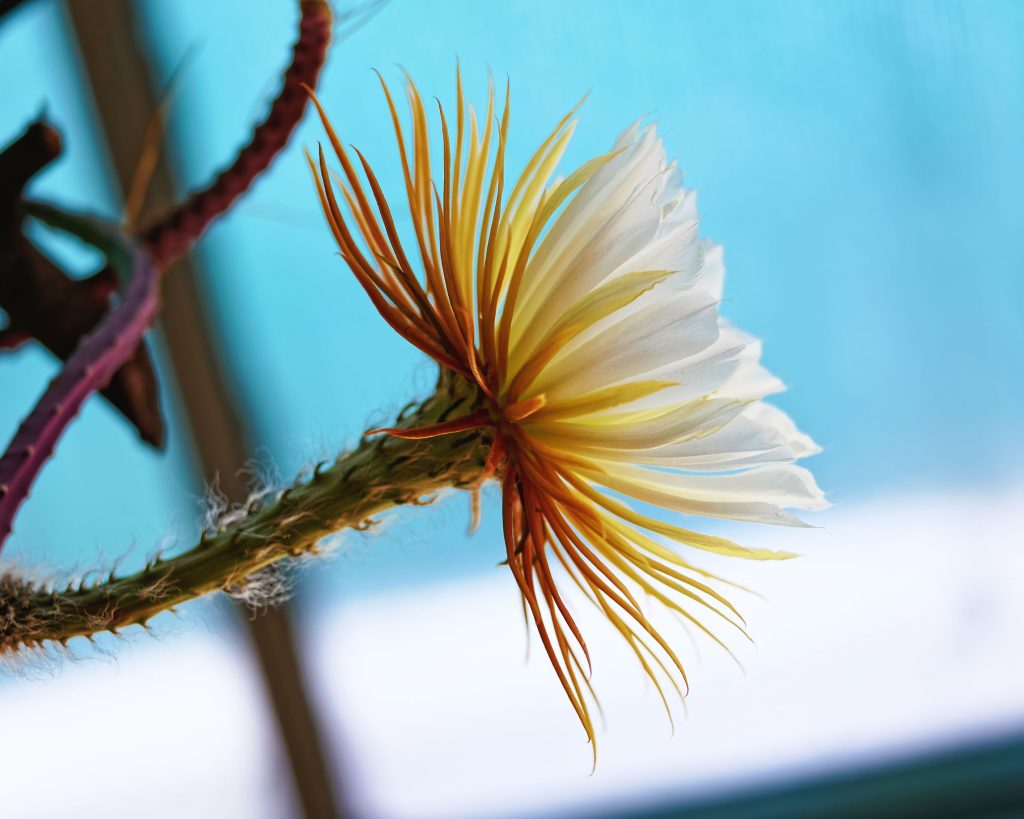Vis Medicatrix Naturae
Deborah Frances, RN, ND
Chris Chlebowski, DC, ND
In answer to a question from a one of his students, Bill Mitchell, ND, picked up the chalk and proceeded to fill 2 blackboards with biochemical equations. He then set the chalk down, turned back to the students, and said, “Basically, we have no idea.”
While there is no doubt that continuing to deepen our understanding of biochemistry and pathophysiology is a vital part of serving our patients, our real job, as Benedict Lust always stressed, is to mobilize the vital force.
The following cases offer a few examples of the incredible results naturopathic doctors see regularly in clinical practice – results that blossom from the healing power of nature inherent in the therapies we choose and in our patients’ bodies.
Bill also used to say, “Nature does the work. The doctor takes the credit.”
A Case of Arrhythmia & Chest Pain
Dr Chlebowski
A 68-year-old woman presented to the clinic with new symptoms of palpitations and chest pain. She described the pain as a sensation of constriction that felt like an “iron band” encircling her chest. Examination revealed tachycardia and an irregularly irregular pulse. She had responded well in the past to homeopathic Phosphorus and Phosphoric acid for symptoms of rheumatoid arthritis and fatigue, but the cardiac symptoms were a new development.
Based on the keynote symptom of constriction as if a metal band was around the chest1 the patient was given 1 dose of Cactus grandiflorus 30C in the office, and a dose of 200C to take home and use if symptoms did not abate. Within 12 hours of the 30C dose, the strange feeling was gone from her chest, having disappeared rapidly and permanently. Both the rate and the rhythm of her heart had also returned to normal.
A Case of End-Stage CHF
Dr Frances
A 90-year-old woman in end-stage congestive heart failure (CHF) had extreme dyspnea that was aggravated by the slightest exertion. Even the effort of talking was too much. Although she was being treated by a cardiologist, she had experienced little to no relief from allopathic medications. Respirations were short, shallow, and frequent, and she suffered from a constant, weak, dry cough that added to her state of exhaustion.
Three rubrics were used from Murphy’s Repertory:
COUGHING, HEART, complaints, with2
CLINICAL, CONGESTIVE, heart disease3
BREATHING, DIFFICULT, HEART, problems, with4
Several remedies came up, but on reviewing materia medicia, Cactus grandiflorus seemed the most appropriate. As the daughter gave the case to me and I did not have the opportunity to see the patient, it is likely I was missing some key symptoms that might have made me more confident in my prescription. Cactus was chosen for its strong affinity for the heart and the fact that it fit what symptoms I did have for her.
The patient was given a 30C dose, to take every 2 hours as needed. On follow-up with the daughter a day or so later, I learned that the remedy had significantly alleviated both the dyspnea and the cough. The patient was breathing much more easily and the family was quite relieved. The patient was told to use the 30C potency as needed, and the remedy continued to help until she went into a coma and died a few months later.
Cactus, the Remedy
The symptom of being bound by a metal band is a keynote for homeopathic Cactus, a remedy that is also known to have an affinity for the heart. Other indications for prescribing Cactus include valvular insufficiency, ventricular hypertrophy, palpitations, and angina with a constrictive sense of suffocation.5 Interestingly, Dr Chlebowski has also successfully prescribed Cactus for dysmenorrhea with a constrictive, squeezing quality, which shows that the essence of this remedy can be represented in any system of the body.
Cactus, the Herb
When used botanically, cactus (Latin name, Selenicereus grandiflorus) acts as a stimulating tonic, cardiac restorative, and diuretic. It is especially useful in CHF, mitral valve insufficiency, and angina.6 A low-dose botanical, cactus should be administered judiciously. A 1:1 tincture of fresh plant may be given in divided doses of up to 45 drops in any 24-hour period.6
Selenicereus grandiflorus, also known as night-blooming cereus, thrives in the harsh, dry soil of the desert and blooms only at night, encouraging us to do the same when life seems barren and dark. Thirty drops of Cactus tincture can be added to a 1-oz bottle of water, and given in doses of 1-5 drops, as needed, for melancholic despair and anxiety. Giving the patient an image of the plant blooming in the desert night can help augment the healing power of the medicine. The night-blooming cereus is specific for patients going through a dark night of the soul. Plants have so much to share with us on so many levels…Vis medicatrix naturae.
Repetition of the Dose
As I (Dr Frances) write up these cases each month, I am struck by the differences in our styles of prescribing. Dr Chlebowski tends to repeat a homeopathic remedy sparingly, whereas I often have my patients repeat frequently in acute cases. We both get good results; so much for dogma. Instructions to back off with repetitions, once the remedy begins to act, are crucial, and the remedy should only be repeated this frequently in acute cases.
A Case of Impending CVA
Dr Frances
The daughter of a 66-year-old long-term patient called in a panic to report that her mother was experiencing a sudden onset of what she called “amnesia.”
Suspecting a cerebrovascular accident (CVA) in the making, I instructed her to take her mother directly to the emergency room. “But stop by the office on your way,” I added. “I’ll be waiting outside.”
When they pulled up 10 minutes later, I handed the patient a teaspoon and a solid extract of hawthorn, with instructions to take it like food. “Just eat it,” I said firmly.
The patient later reported that her symptoms lifted dose by dose with each teaspoonful of hawthorn she ingested. She was already better by the time she got to the hospital, where she was given the diagnosis of transient ischemic attack.
Discussion
Rich in antioxidant and anti-inflammatory flavonoids, hawthorn (Crataegus) acts as a nutritive tonic, enhancing cardiovascular (CV) health by improving coronary perfusion, lowering high blood pressure, increasing the cross-linkage of connective tissue of blood vessels, and generally strengthening the function and integrity of CV tissue.7 The inclusion of hawthorn in the treatment of CV disease (CVD) has been seen in our clinic to enhance the efficacy of other therapies aimed at treating CVD. I (Dr Frances) never omit it from any CV treatment plan.
Although Crataegus is usually thought of as a nutritive tonic for long-term use, it should not be neglected in acute cases. Its efficacy in acute angina, impending CVA, and acute asthma is reliable, significant, and not to be underestimated.
Hiatal Hernia Syndrome
Dr Chlebowski
Many times over the last decade, I (Dr Chlebowski) have had patients report to the clinic with “cardiac symptoms” of palpitations and pain and pressure in the left side of the chest but whose cardiac workup was negative. These patients are rightfully fearful that they are experiencing some kind of cardiovascular event. Often they have already consulted their primary-care physicians or made a visit to the emergency room, only to have a thorough cardiac workup come out negative. More frequently than not, a simple reduction of the stomach alleviates all of the patient’s symptoms.
Disappearance of symptoms in these cases occurs so reliably that I cannot think of a case where the technique has failed. This suggests that even in cases where symptoms are of true cardiac origin, hiatal hernia, gastroesophageal reflux disease (GERD),8 and other possible pathologies of the stomach should be addressed, as their presence may likely be exacerbating the cardiac condition.
Due to the anatomical proximity of the stomach to the heart, even a mild hiatal hernia can cause cardiac symptoms. Also, because the heart and stomach share parasympathetic innervation, increased tone of the vagus nerve can reflexively cause irritation in the heart. Both organs relate to the sympathetic nervous system at the level of the thoracic spine: the splanchnic nerve and T5 to T10 for the stomach, and T2 to T4 for the heart.
For more information, I highly recommend the book, Hiatal Hernia Syndrome: Insidious Link to Major Illness: Guide to Healing, by Theodore Baroody, ND, DC.
[Refs]:
- Boericke W. Materia Medica with Repertory. Santa Rosa, CA: Boericke and Tafel Inc; 1927:110.
- Murphy R. Homeopathic Clinical Repertory, 3rd ed. Blacksburg, VA: Lotus Health Institute; 2005:527.
- Murphy R. Homeopathic Clinical Repertory, 3rd ed. Blacksburg, VA: Lotus Health Institute; 2005:398.
- Murphy R. Homeopathic Clinical Repertory, 3rd ed. Blacksburg, VA: Lotus Health Institute; 2005:268.
- Boericke W. Materia Medica with Repertory. Santa Rosa, CA: Boericke and Tafel Inc; 1927:111.
- Tilgner S. Herbal Medicine from the Heart of the Earth. Pleasant Hill, OR: Wise Acres LLC; 2009:57.
- Tilgner S. Herbal Medicine from the Heart of the Earth. Pleasant Hill, OR: Wise Acres LLC; 2009:102.
- Hubbard A, Wong E. Heartburn & Heartbeats: Exploring GERD & Atrial Fibrillation. NDNR. April 2018;14(4):1.
 Deborah Frances, RN, ND, practiced homeopathy and nutrition as a registered nurse before graduating from NCNM (now NUNM) in 1993. She practiced in rural Oregon for several years before returning to Portland to teach at NCNM. Dr Frances has been a popular lecturer at conferences around the country and has taught as adjunct faculty at both NCNM and Bastyr. She has taught classes on herbal medicine, acute prescribing for NDs, dream work, and shamanic healing. She is strongly influenced by the traditional teachings of her Lakota ancestry. Dr Frances is the author of Practical Wisdom in Natural Healing, available at drdeborahfrances.wordpress.com.
Deborah Frances, RN, ND, practiced homeopathy and nutrition as a registered nurse before graduating from NCNM (now NUNM) in 1993. She practiced in rural Oregon for several years before returning to Portland to teach at NCNM. Dr Frances has been a popular lecturer at conferences around the country and has taught as adjunct faculty at both NCNM and Bastyr. She has taught classes on herbal medicine, acute prescribing for NDs, dream work, and shamanic healing. She is strongly influenced by the traditional teachings of her Lakota ancestry. Dr Frances is the author of Practical Wisdom in Natural Healing, available at drdeborahfrances.wordpress.com.
 Chris Chlebowski, DC, ND, is a homeopath, chiropractor, and naturopathic physician. Dr Chlebowski graduated from Western States Chiropractic College in 2007 and from NCNM in 2011. He and his family live and work in Ashland, OR, where he owns and operates an integrative clinic focused on the treatment of difficult, chronic disease. Although his work is always built on a firm foundation of homeopathy, botanical medicine, and nutrition, he also utilizes hyperbaric oxygen, IV therapies, and many other modalities.
Chris Chlebowski, DC, ND, is a homeopath, chiropractor, and naturopathic physician. Dr Chlebowski graduated from Western States Chiropractic College in 2007 and from NCNM in 2011. He and his family live and work in Ashland, OR, where he owns and operates an integrative clinic focused on the treatment of difficult, chronic disease. Although his work is always built on a firm foundation of homeopathy, botanical medicine, and nutrition, he also utilizes hyperbaric oxygen, IV therapies, and many other modalities.





